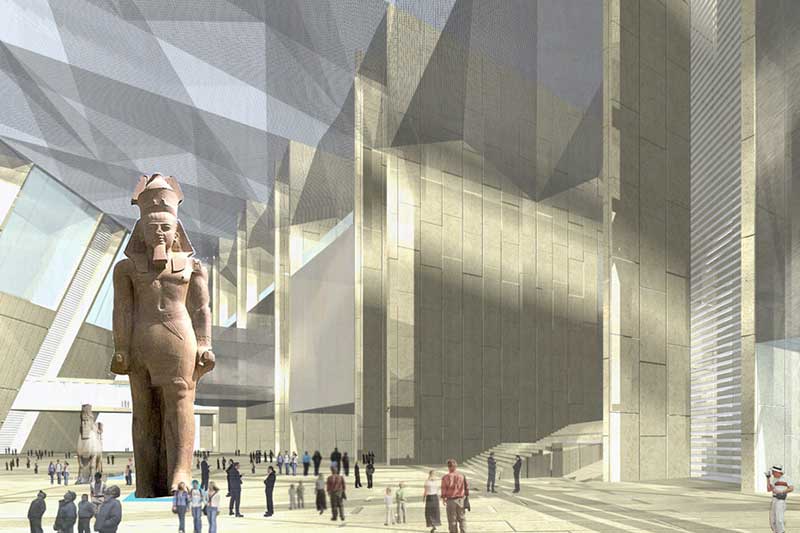
The government has finished removing up to 325,000 tons of garbage in the areas surrounding the Grand Egyptian Museum (GEM), Egyptian Minister of Local Development Hisham Amna announced.
This comes under a contract signed between the Ministries of Local Development, Environment, Planning and Economic Development, and the Arab Organization for Industrialization, to remove garbage accumulations and close up random dumps across the country.
Amna confirmed in a statement that the cost of removing the waste amounted to LE57 million, borne by the Ministry of Local Development.
The process began on April 18, and ended on July 12, he said.
According to Amna, 317,000 tons were removed from Kaabish Street, and 8,000 tons were removed from the Cairo-Alexandria road.
The Ministry of Local Development is proceeding in full swing in following up the new municipal waste system in governorates, in coordination with the other ministries and concerned authorities.
This aims to address the problem of garbage disposal especially at historical areas, alongside working to develop the infrastructure of the waste system.
A grand opening
The Egyptian Minister of Tourism and Antiquities, Ahmed Eissa, announced that he anticipates the opening of the Grand Egyptian Museum (GEM) to be between October and February.
Eissa said, in press statements, that work is underway to finish the GEM, as well as the area surrounding the museum.
Constructed on approximately 500,000 square meters, the new GEM is located nearby the Giza Pyramids and will house the world’s largest antiquities collection belonging to a single culture’s heritage.
The GEM is set to showcase 5,000 relics from Tutankhamun’s collection as well — including 2,000 artifacts displayed for the first time.
The museum includes huge exhibition halls, and is distinguished by its proximity to the Giza pyramids area and the New Administrative Capital, which makes it a gateway to Egypt’s past, present and future.
It is expected to attract about five million tourists.




